[WATCH] "There's a massive difference between hotels and OTAs on metasearch"
Why does metasearch matter to hotels? One word: Google. Find out how hotels can succeed on metasearch and why parity is crucial to a good ROI.
What is considered good parity on hotel metasearch? We looked into our data to analyze how often direct prices are undercut by OTAs on Google Hotel Ads.
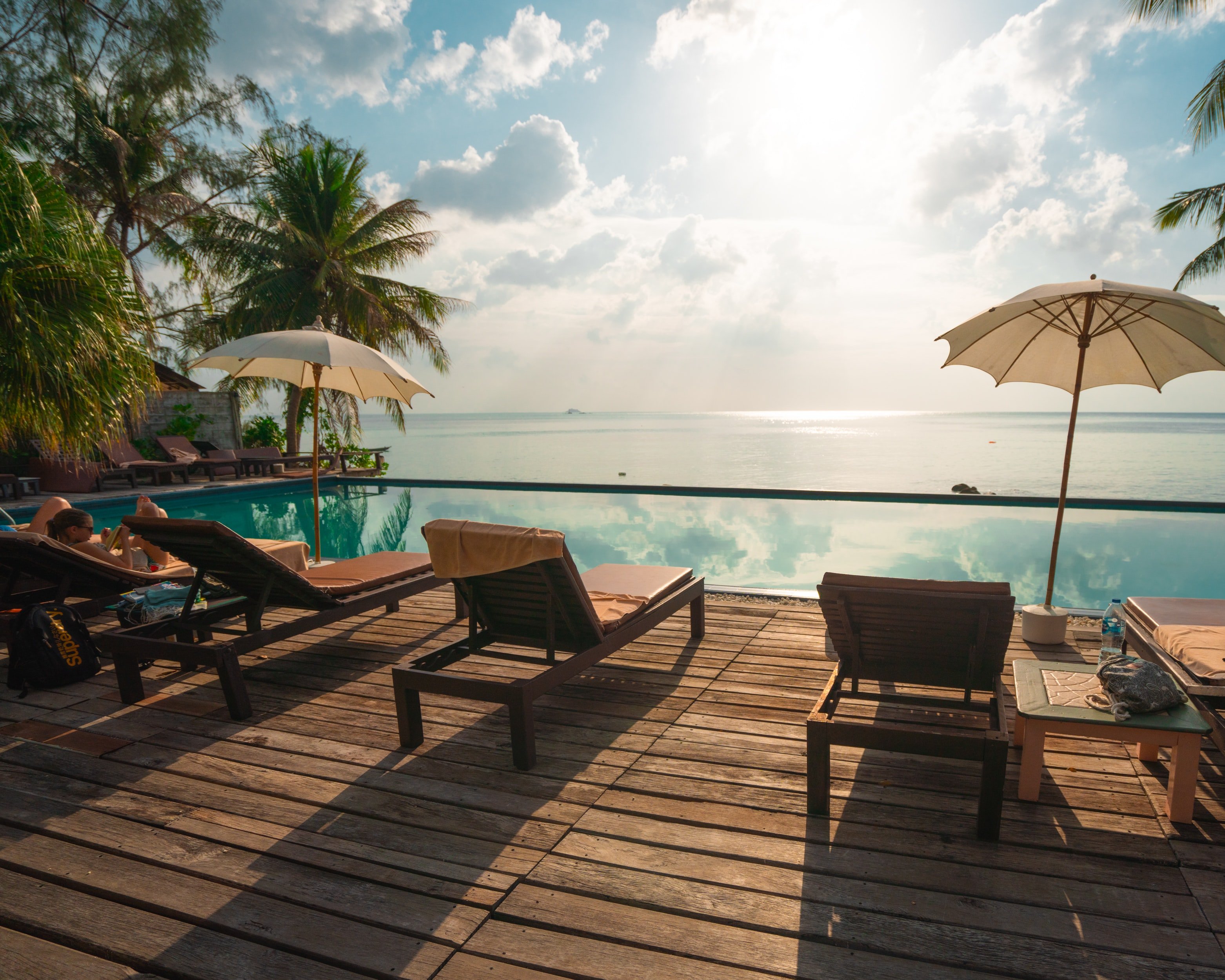
Parity is a deciding factor influencing where visitors on hotel metasearch sites like Google Hotel Ads, Tripadvisor and Trivago decide to book. When your direct price is in parity or cheaper direct, our data shows that bookings increase by 3x. By contrast, conversions decrease drastically when you’re consistently undercut by OTAs.
Keeping your metasearch parity in top shape should be a major priority for every hotelier as we enter a new ‘diamond age’ of travel in 2022. But what constitutes good parity health on metasearch anyways? How often do direct prices tend to be undercut by OTAs on meta, and what benchmark should you ultimately be aiming for when it comes to improving your parity?
We looked into our data to analyze how often metasearch users have seen direct prices as in parity, cheaper or undercut in comparison to OTA rates this year. The data focuses exclusively on Google Hotel Ads, by far the most used metasearch engine accounting for over half of all meta traffic and conversions - and therefore a good indication of how users are seeing prices on other meta engines.
It takes all OTAs participating on meta into account and shows a “guest-centric” view, meaning the data shows how customers are actually seeing direct prices from their point of view - if just one OTA in the metasearch results has a cheaper rate, you’re regarded as undercut.
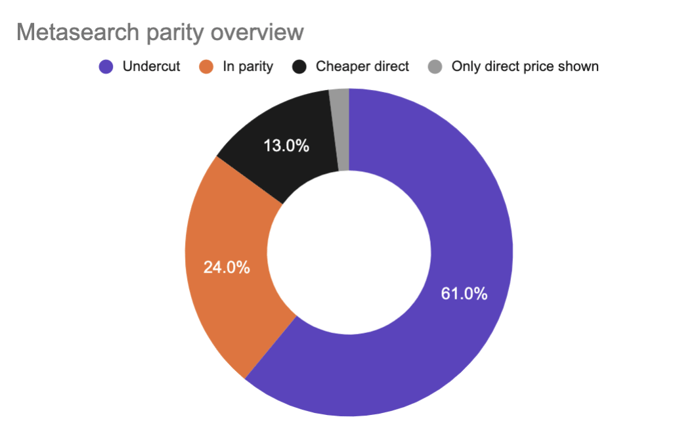
On average, 61% of all direct prices that have appeared on metasearch since 1 January 2022 were undercut by at least one other OTA. 24% of impressions appeared in parity and just 13% appeared cheaper than all the other displayed rates. A small percentage (2%) reflects instances where the hotel’s direct price was the only displayed rate.
This means that for every ten customers who’ve used metasearch over the course of this year, around six saw the direct price as undercut by a better rate, two saw it in parity and just one saw it as cheaper direct.
This is a general overview spanning properties across the globe. When we break the data down by hotel region, we can see which ones in particular have experienced the most aggressive OTA undercuts. In the graph below you’ll see the average number of times direct prices were seen as undercut, in parity and cheaper direct on metasearch for hotels located in the NORAM, EMEA and APAC regions.
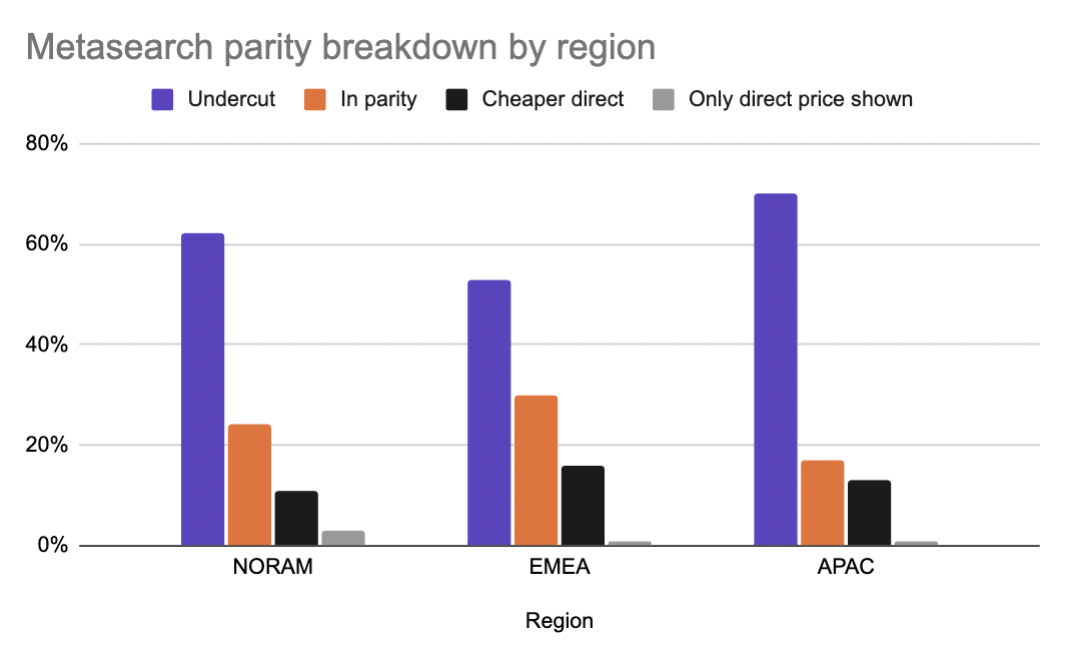
The most aggressive OTA undercuts were for hotels located in the APAC (71%) and NORAM (62%) regions, with significantly fewer undercuts for hotels in EMEA (52%).
There’s a likely explanation for this. Travel has returned to normal fairly quickly in the USA while travel demand for countries across Asia is on the rise, so it’s without surprise that OTAs are readily adapting their rate strategies for these regions. By contrast, lagging restrictions in some European countries means that EMEA will likely be seen as less of a priority. That said, travel demand is rising globally and OTAs are fully prepared to seize the opportunity. Hoteliers should be ready to respond with full force if they want to drive more direct bookings.
The data takes all OTAs participating on metasearch into account, even smaller rogue OTAs you may never have heard of. However, remember that not all of them carry equal weight when it comes to undercutting power. Triptease data shows that some of the most frequent OTA undercutters on metasearch are:
As you’d expect, not all of these have the same impact on customer behavior. Average click-through rates plummet when the direct price is undercut by major OTAs like Booking-com, Agoda and Expedia, whereas they only reduce marginally when the direct price is undercut by smaller, less trustworthy OTAs such as Snaptravel, Travellergram, Traveluro, Musetrip and Clicktrip.
The difference suggests that these smaller OTAs are not as great a threat to bookings. However, that’s not a reason to disregard them. They still have a significant impact on where customers decide to book. Managing relationships with distribution partners and wholesalers is key to keeping the flurry of rogue “random.coms” under control.
The data provides a general overview of the metasearch parity landscape in 2022. However, remember that OTAs implement different rate strategies for customers searching in different locations, on different device types, and for different trip details - taking factors like lead times, check-in dates and lengths of stay into account. It can be helpful to understand where OTAs are focusing their efforts the most.
When it comes to searcher locations, OTAs are getting more savvy with rates for guests who represent markets where demand is highest.
For NORAM, this includes guests from the USA, Mexico, Canada and Great Britain. For EMEA it includes guests from the USA, Great Britain, Spain and France, and for APAC it includes guests from India, Australia, Indonesia and Thailand.
Lead times are fairly consistent across all regions, with more aggressive OTA rates being pushed at booking queries made on meta up to 60 days in advance and then dropping for longer lead times. Travellers are still hesitant to book far in advance and OTAs are fully aware of this. Likewise trends around device type are consistent, with mobile being a prime target for undercutting OTAs above desktop and tablet.
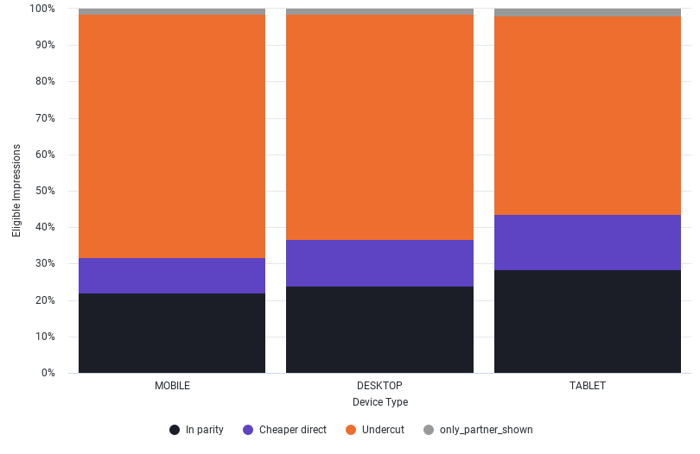
This is not a surprise. OTAs are championing the mobile revolution and are clearly intent on capturing mobile-savvy customers with attention-grabbing rates on metasearch coupled with tailored booking experiences.
On metasearch, parity and performance are inextricably linked. From the data, we can see that just 2.46% of meta users who see a direct price undercut click through to the hotel’s official website; this goes up to 3.61% when the price is in parity and 5.42% when it’s cheaper direct.
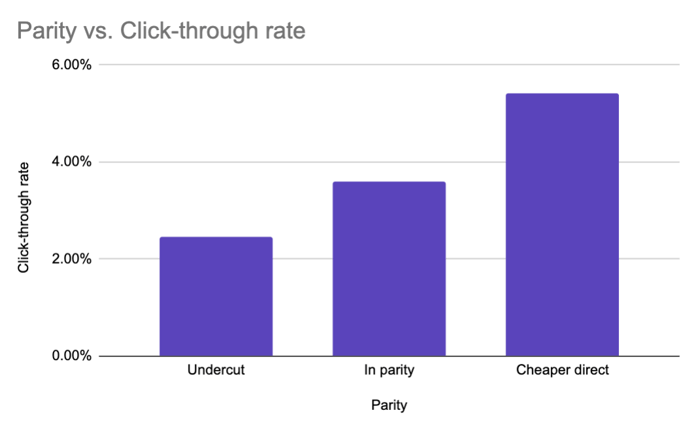
The story is similar with our conversion data. Of the total number of metasearch visitors who see a direct price undercut, only 0.07% go on to make a booking. 0.108% of visitors who see a direct price in parity go on to book and 0.164% of visitors who see the price cheaper direct go on to book.
This means that if 10,000 visitors were to see your price on meta, you’d only drive 7 bookings if you're undercut. This would go up to 11 bookings if you’re in parity and 16 bookings if you’re cheaper direct.
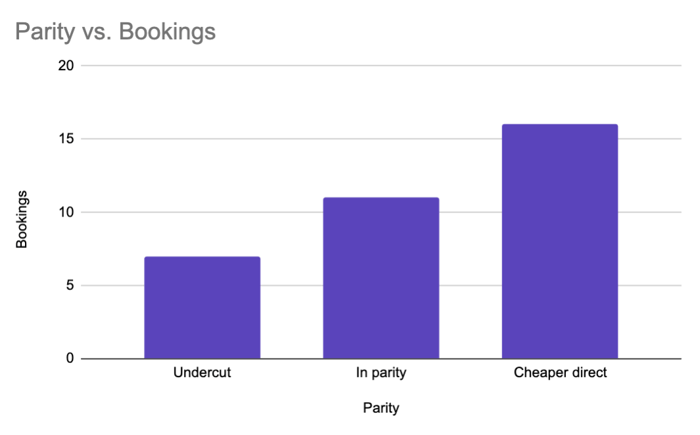
The lesson is clear - if you want to drive more direct bookings on meta you’ll need to start paying greater attention to how visitors are seeing your direct price in comparison to OTAs.
Investing in proper rate parity intelligence is a good starting point. But you’ll also want to make sure you’re partnering with a meta provider who can leverage your parity in metasearch bids. When your hotel is in parity or cheaper direct in the metasearch results it’s crucial to bid up to ensure you grab the customer’s attention and win the booking. Likewise bidding for top placement when you’re significantly undercut can both exhaust your ad spend and cause long-term damage to your brand.
The reality is that standard agency campaign management that places static bids regardless of your parity just isn’t going to cut it in today’s volatile OTA landscape.
Only an algorithmic approach that combines automation with customer and parity insights will ensure you’re able to keep up with OTAs around the clock to increase your direct booking volumes from metasearch.
Why does metasearch matter to hotels? One word: Google. Find out how hotels can succeed on metasearch and why parity is crucial to a good ROI.
Meta-on-meta is the case when metasearch sites like TripAdvisor take part in Google Hotel Ads auctions. Let’s take a look at what it means for hotels.
[New Release] Read how Triptease used Google's stay-date bidding lever to boost metasearch performance, based on hotel rate parity data.
Get the latest in hotel revenue, distribution, marketing and much more:
By registering, you confirm that you agree to the storing and processing of your personal data by Triptease as described in the Privacy Policy.